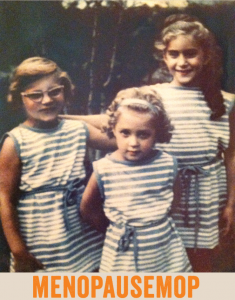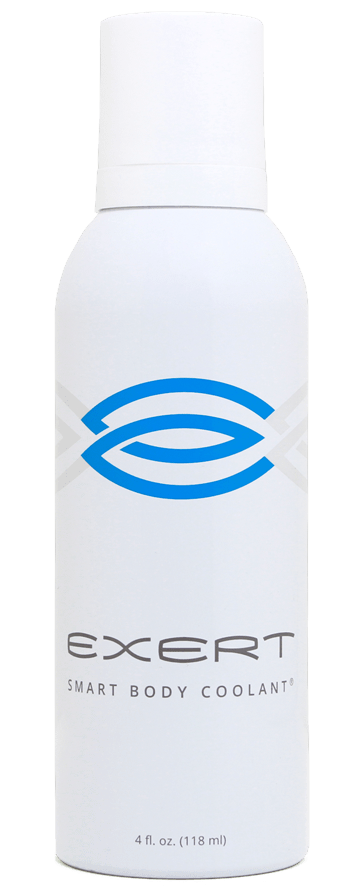Newsflash! Severe hot flashes? Keep an eye out for bone health!
Heads up! If you experience moderate to severe hot flashes and night sweats, you may be at higher risk for lower bone density and in turn, a higher rate of hip fractures than women without these symptoms. These study findings were published online yesterday in the Journal of Clinical Endocrinology & Metabolism,
A bit of background…researchers prospectively examined data from over 23,000 women participating in the Women’s Health Initiative study who did not use hormones. The goal was to assess the association, if any between vasomotor symptoms, that is, hot flashes and/or night sweats, and bone mineral density. In turn, they collected self-reports of fractures (i.e. hip, spine, non-vertebral) on a semi-annual basis; these were subsequently confirmed by reviewing medical records.
The findings? Over an average of eight years, women who reported moderate to severe hot flashes or night sweats had almost twice the risk for developing a hip fracture over the time period of the study than women who did not, regardless of a younger age or higher body mass index, or other factors such as time since menopause, race/ethnicity or physical activity. And, while additional analyses did slightly reduce this risk, moderate to severe vasomotor symptoms remained a significant risk factor for hip fracture over the study course. Additionally, the findings demonstrate that women with more severe symptoms had lower bone mineral density measures over time in the hip joint and spine.
Although it’s unclear, the researchers note that lower estradiol levels may account for the association between more severe symptoms and lower bone mineral density (as, data have shown that women with higher estradiol levels during menopause tend to have lower rates of bone loss). Regardless, having more severe flashes and sweats should raise a few red flags for women and their practitioners and prompt greater attention to lifestyle strategies for preserving bone mineral density. This topic has been covered thoroughly on Flashfree, and strategiest include diet, weight-bearing exercise and adequate sun exposure.
Read More
Newsflash: What’s the latest on soy?
Does it or doesn’t it? That is, does soy relieve menopausal hot flashes or not?
The evidence has been less than definitive however, researchers now say that trials examining the benefits or lack thereof of soy in attenuating symptoms may have been negatively affected by significant limitations, such as failing to recognize treatment timing and duration on effectiveness, small numbers of women in the studies and wide variations in how much hot flashes were reduced with treatment. And so, they took another look at the data using a new model, one that allows scientists to actually compare different treatments and evaluate the effectiveness of different factors, including dose, duration of treatment and formulations. This is an important method of analysis and one that could truly be considered a game changer. They say that their findings, published online in the British Journal of Pharmacology, will provide “information for deeper understanding of the efficacy of soy isoflavones on menopausal hot flashes.”
I am going to skip over the science mumbo jumbo and get right to the meat of how they came to their ultimately conclusions:
- Findings were based on an analysis if 16 studies published between 1998 and 2012 enrolling over 1700 subjects.
- In terms of duration, the effect of soy isoflavones were studied for anywhere from 4 weeks to two years, with a median of 12 weeks.
- In these studies and vis a vis modeling, soy isoflavones were compared to both placebo and estradiol, the latter in terms of how long it takes to reach effectiveness. This last point is important.
And now, the result.
While the effect of isoflavones on hot flashes was superior to placebo, the researchers still observed a relatively strong placebo effect at play. Importantly, however, the placebo effect at play was even higher in trials examining estradiol and hot flashes. The reason? Apparently, women might have lower expectations when it comes to alternative therapies like soy. Yet, there was still another important finding that was teased out by this new modeling:
Soy isoflavones require at least 13.4 weeks to reach at least half of their full level of activity in the body. In comparison, estradiol only needs about 4 weeks. So, when you do the math, at four weeks (which is the usual length of most clinical trials of this nature), estradiol has reached 80% of its peak activity level and soy isoflavones, only 47%. By 48 weeks, soy isoflavones catch up.
Additionally, as I’ve written time and again, there are different components of soy with differing levels of effectiveness. Genestein is the strongest and yet, only three studies specifically looked at soy agents that contained genestein only. So, there was no way for the researchers to break down the findings by components.
Overall, the key takeaway is that it takes longer for soy to reach maximum effectiveness than it does estrogen. So, if we are going to quantify value moving forward, it’s important to account for this significant distinction.
When it comes to soy, it may simply be that slow and steady wins the race.
Read MoreCaffeine and hot flashes
 True confession: I hated reading this study and I truly dislike the findings. But I feel obligated to share what I’ve learned about caffeine and menopause, if only to provide you with additional options for symptoms management. If you are a long-time reader of Flashfree, you will remember that I’ve previously covered the health benefits of coffee so the news isn’t all that bad. However, if you are experiencing frequent hot flashes and night sweats, you may want to considering cut down on your daily consumption.
True confession: I hated reading this study and I truly dislike the findings. But I feel obligated to share what I’ve learned about caffeine and menopause, if only to provide you with additional options for symptoms management. If you are a long-time reader of Flashfree, you will remember that I’ve previously covered the health benefits of coffee so the news isn’t all that bad. However, if you are experiencing frequent hot flashes and night sweats, you may want to considering cut down on your daily consumption.
Recently, researchers at the Mayo Clinic in Rochester, MN surveyed over 1,800 women who visited the clinic for menopausal complaints. The women were asked to respond to a scientific survey — the Menopause Health Questionnaire — that assesses a variety of important factors such as demographics, reproductive/gynecologic histories and the presence/severity of symptoms. With regard to caffeine intake, the women were asked if they consumed drinks with caffeine (e.g. coffee, tea, soft drinks) and current smoking status was also evaluated. Because of the subjective nature of pre- and perimenopause, these women were grouped and then compared to women who were in full menopause.
Although the use of self-reported questionnaires always introduce possible bias for skewed study findings, it’s important to note that compared with women who did not use caffeine, caffeine users scored higher for vasomotor symptoms. Moreover, even after the researchers accounted for possible confounding factors such as smoking and menopausal status, ingesting caffeinated beverages was still significantly associated with an increase in bothersome hot flashes and night sweats. Evidently, caffeine use did not affect other common symptoms, such as sleep issues or sexual function).
A possible explanation lies with way that caffeine possibly interacts with the body’s estrogen; for example, it may inhibit an enzyme that converts the hormone androgen into estrogen. Another theory is that is affects the levels of other sex hormones, such as testosterone. Regardless, if you are experiencing frequent hot flashes and night sweats and have come to your wit’s end, you may want to consider how you are using caffeine. Breaking up is hard to do but it may save you a drop or two of that sweaty, hot stuff!
Read More
Mop this!
I receive solicitations regularly on Flashfree and to be honest, I turn down most of them. But I paid attention to this one because I liked the concept behind the product. What product, you ask?
The Menopause Mop, of course!
Look, I am not a huge fan of the name and for many women, it may provoke images of a sweaty, wet mop that never dries out no matter how many times it’s been wrung. However, when one of the three ‘Hot Flash Sistas sent me a note explaining that she and her siblings — all currently in their 50s and experiencing symptoms — started to experience hot flashes, they (and I) decided to get busy. She says that “the idea sprang from needing and wanting something attractive, functional and fun for women going through menopause.” Hence, the Menopause Mop was born.
Characterized as ‘neat, discreet and taking the heat,’ the Menopause Mop is really a 100% cotton handkerchief that is custom-sized for women and hand sewn by Cousin Sista Judy (a cousin who attended the Fashion Institute of Technology in NYC). It comes with a nifty little breathable mesh bag and can be easily accessed to dab away excess perspiration when you are feeling the heat. Even better, a portion of the proceeds from The Menopause Mop go toward supporting the Ovarian Cancer Foundation. The Mops appear to be reasonably priced at $15 and come in four colors: Orange Orange, Polka Dot Purple, Pretty in Pink and Gardeny Green.
Moniker aside, these three Sistas are trying to take off in the menopause space.
Mop this and show some love.
[Disclosure: I was not offered monetary or product compensation for this post. I simply like the idea and I love that they are giving back and paying forward.]
Read MoreThere’s a new wine in town…
I love wine. I drink it regularly, even if it tends to promote a bit of heat of the hot flash variety. And, while I am certainly not a oenophile, I take great pleasure in exploring different wines from different regions and countries.
So, I was dumbstruck when I started researching a topic for this week’s posts and ran across Hot Flash Wines.

There’s a new schtick in menopauseland and it’s wine, that is, ‘A Wine for your Mood at the Moment.’ Let’s take a sampling of the selection, shall we?
- Mood Swing Merlot $18.99/bottle
- Covers Off Chardonnay $16.99/bottle
- Zin-O-Pause $18.99/bottle
That’s a pricey way to drink away the menopause or as the founder of the company, Mollie Openshaw would position it, celebrate, laugh at and make fun of menopause. I applaud Mollie and what she is trying to do; while Skinny Girl takes away the calories, Mollie and friends basically turn their backs on that nonsense and have a glass or two of vino. Their philosophy? Embrace who you are and what you’ve been given, and living healthy is about loving life! Great messages, right?
But, here’s the rub. It strikes me that there is a recent history of appealing to female consumers through the label and admittedly, I am wary of marketing driven wines. I consider myself a wine drinker, not a gender-driven wine drinker and I care more about what’s inside the bottle than what’s slapped on the bottle. It’s unlikely that I’ll even pick up ‘Mad Housewife’ or ‘Rude Girl’ or if truth be told, ‘Hot Flash.’ Having never tasted a Hot Flash, I can’t say much about the flavor or quality of what Mollie is selling but for a hefty pricetag of $17-$19/bottle, let’s hope it’s better than the schtick because the act can only go so far before people lose interest and put their money literally where their mouths are.
Let’s celebrate being women who are in midlife before we start selling ourselves short, one bottle at a time. Hot Flash Wine? Hmmm. Not too psyched about this one.
Read More
Just an application a day…
Keeps the flashes at bay???
When the folks at Exert contacted me on Twitter about their Smart Body Coolant, I wanted to believe, I truly did. However, what I’ve found after a week’s use is that the product simply does not live up to its claims, at least, not for me.
Exert’s Smart Body Coolant is a once-daily body spray composed of phase change and high thermal conductivity materials. Theoretically, it promises to draw heat away from the body much like a wicking fabric, reducing temperature by as much as 2 to 6 degrees. And there’s no need for additional application after a flash; it supposedly ‘recharges’ once the skin drops to optimal temperature.
Admittedly, I have been experiencing lots of undesired heat of late, both during the night and while at the gym and so, another alternative to HRT certainly appeals. But, Exert did nothing for me. Further intrigued by its lack of effectiveness, I delved deeper into its ingredients. Here’s what I learned:
- A phase-change material (PCM) is a substance with a high heat fusion that absorbs or releases energy or heat, when the material changes from solid to liquid. So, when you start sweating, it should be working to release the heat.
- Thermal conductivity refers to how well certain materials transfer heat
- Together, these should equate to cooling.
Except, they don’t.
Look, Exert is well priced and should last up to six weeks with daily application. The application part of this equation lives up to its promises: nongreasy, unscented and non-staining. And, while I remain skeptical about its effectiveness, others’ testimonials are not quite so negative so clearly, there is either a placebo effect at play or it’s working for some. My advice? I don’t believe the hype but at the same time, it’s always worth trying, right? Kudos to the company for a unique idea but spraying flashes away is not in my future. Is it in yours’?
[Disclosure – I was not paid for this review but I did receive a can of Exert care of the company’s representatives.]
Read More








